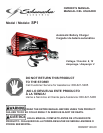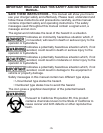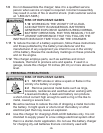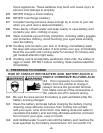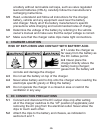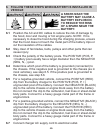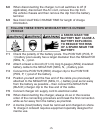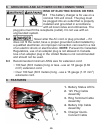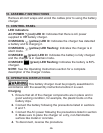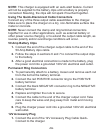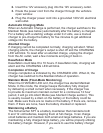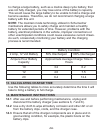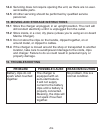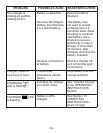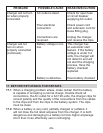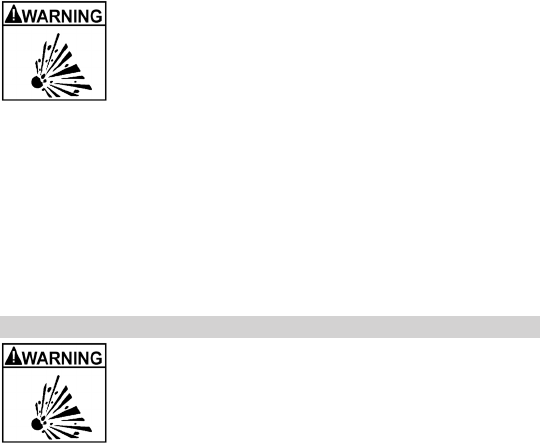
•3•
Donotdisassemblethecharger;takeittoaqualiedservice1.9
person when service or repair is required. Incorrect reassembly
mayresultinariskofreorelectricshock.(Callcustomerservice
at: 1-800-621-5485.)
RISK OF EXPLOSIVE GASES.
WORKING IN THE VICINITY OF A LEAD-1.10
ACID BATTERY IS DANGEROUS. BATTERIES
GENERATE EXPLOSIVE GASES DURING NORMAL
BATTERY OPERATION. FOR THIS REASON, IT IS OF
UTMOST IMPORTANCE THAT YOU FOLLOW THE
INSTRUCTIONS EACH TIME YOU USE THE CHARGER.
To reduce the risk of a battery explosion, follow these instructions 1.11
and those published by the battery manufacturer and the
manufacturer of any equipment you intend to use in the vicinity
of the battery. Review the cautionary markings on these products
and on the engine.
This charger employs parts, such as switches and circuit 1.12
breakers, that tend to produce arcs and sparks. If used in a
garage,locatethischarger18inches(46cm)ormoreaboveoor
level.
PERSONAL PRECAUTIONS2.
RISK OF EXPLOSIVE GASES.
NEVERsmokeorallowasparkorameinthe2.1
vicinity of a battery or engine.
Remove personal metal items such as rings, 2.2
bracelets, necklaces and watches when working with
a lead-acid battery. A lead-acid battery can produce
a short-circuit current high enough to weld a ring or the like to
metal, causing a severe burn.
Be extra cautious to reduce the risk of dropping a metal tool onto 2.3
the battery. It might spark or short-circuit the battery or other
electrical part that may cause an explosion.
Use this charger for charging LEAD-ACID batteries only. It is not 2.4
intended to supply power to a low voltage electrical system other
than in a starter-motor application. Do not use this battery charger
for charging dry-cell batteries that are commonly used with



